Metabolic Flux Network Analysis
MFNA.RmdIntroduction
Metabolic Flux Network Analysis (MFNA) is designed for interpret the complicated isotopomers data.
A simply demo: Metabolic Flux Network from glucose to GSH
We construct a metabolic reaction network based on KEGG reaction database, simulate atom transfer in the reaction and trace isotope source in isotopomers. Therefore MFNA could take all known metabolic reaction in consideration to perform metabolic flux network analysis.
Now it has been competent for discovering the reaction path from given isotopic tracer to isotopomers. It is still under development to integrate MSIP and MFNA to calculate metabolic flux.
Metabolic Flux Network Analysis
Atom transfer in KEGG reaction
We collect metabolic reactions and encoding them as metabolic reaction network.
For every reaction, the constructed network consist of nodes (metabolties and reaction) and directed edges (from substrate to reaction to product).
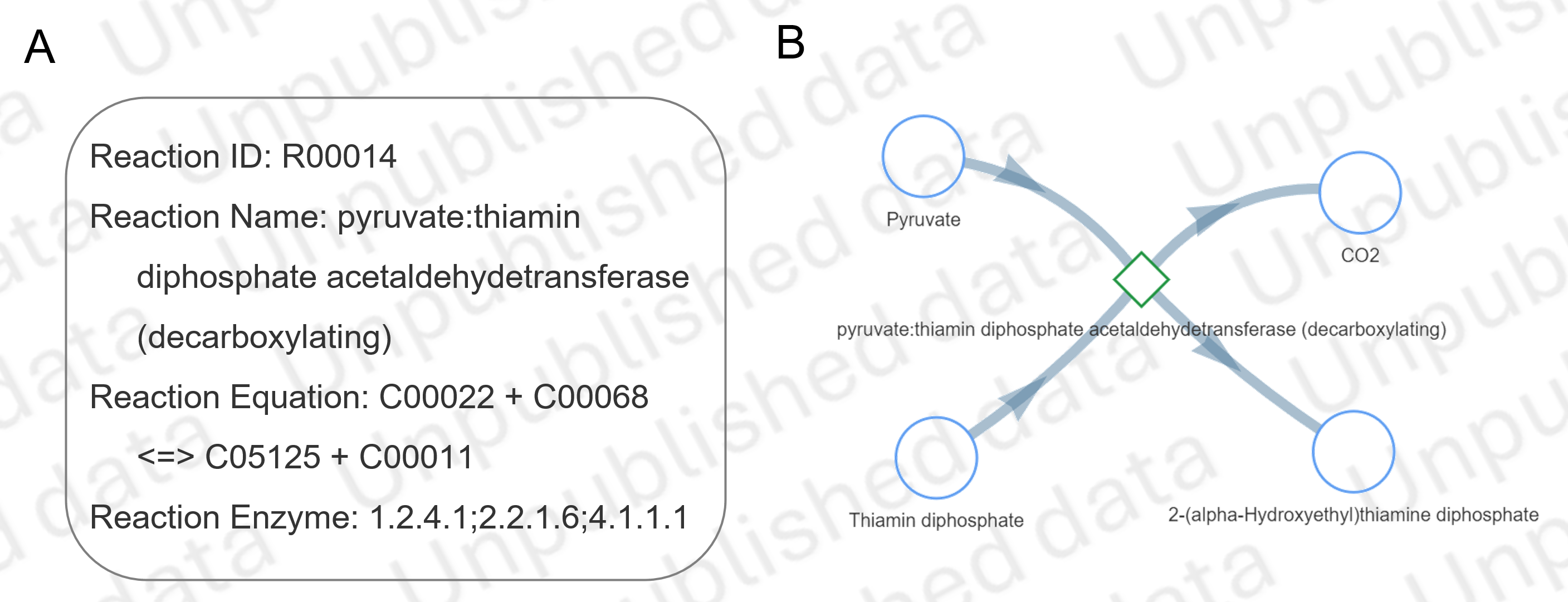
KEGG reaction network
For every reaction node, we encoding atom transfer to model the transfer of atoms between metabolites during metabolic reactions. This is archieved by RXNMapper.
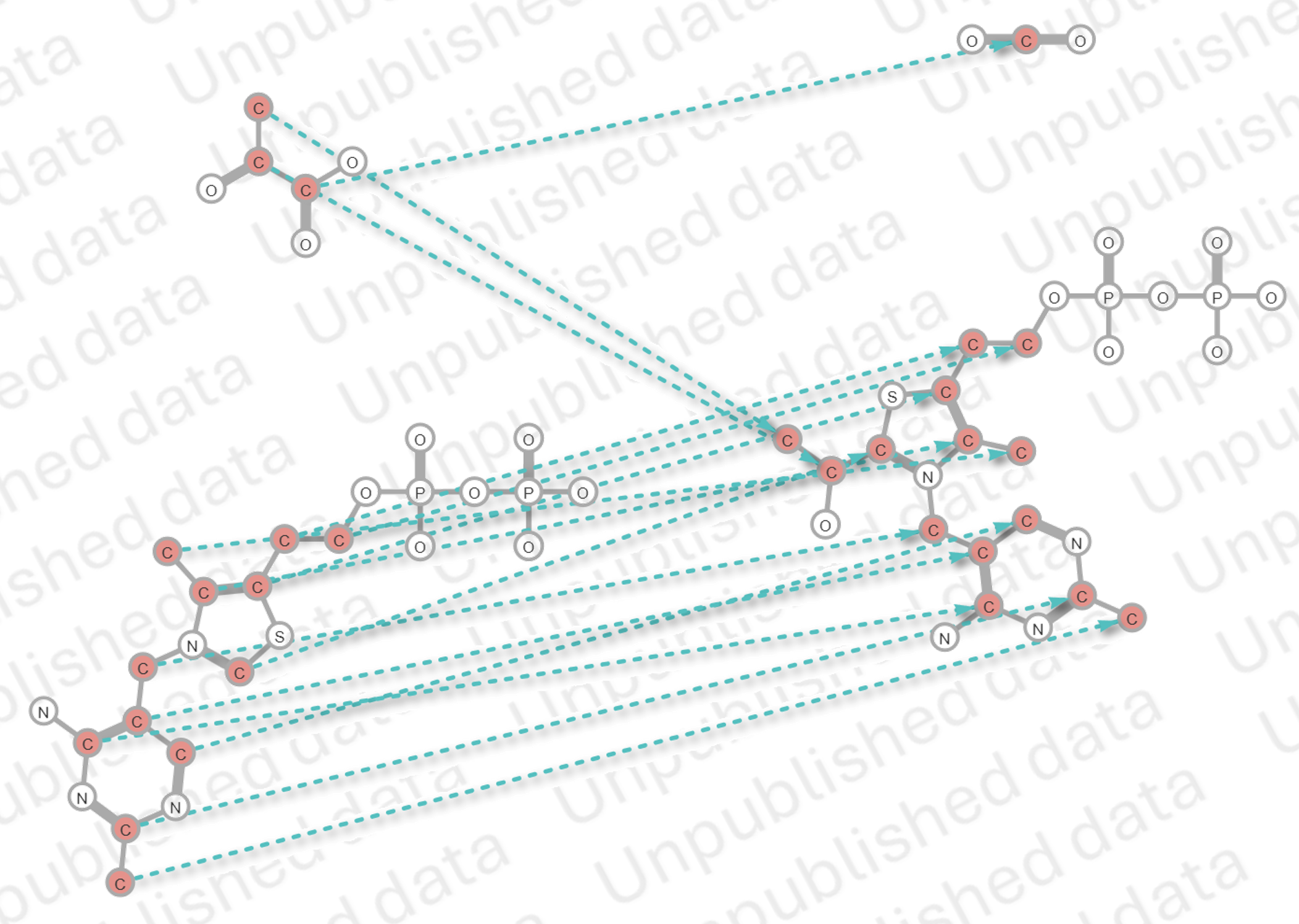
Atom transfer
Network diffusion for isotope tracing
By initializing a metabolite node as tracer, and performing atom transfer recursively, we could simulate the metabolic process in a network diffsuion manner.
When a reaction node is trigerred, the atom transfer will check all isotopomers status of substrate, and output all possible isotopomers of product.
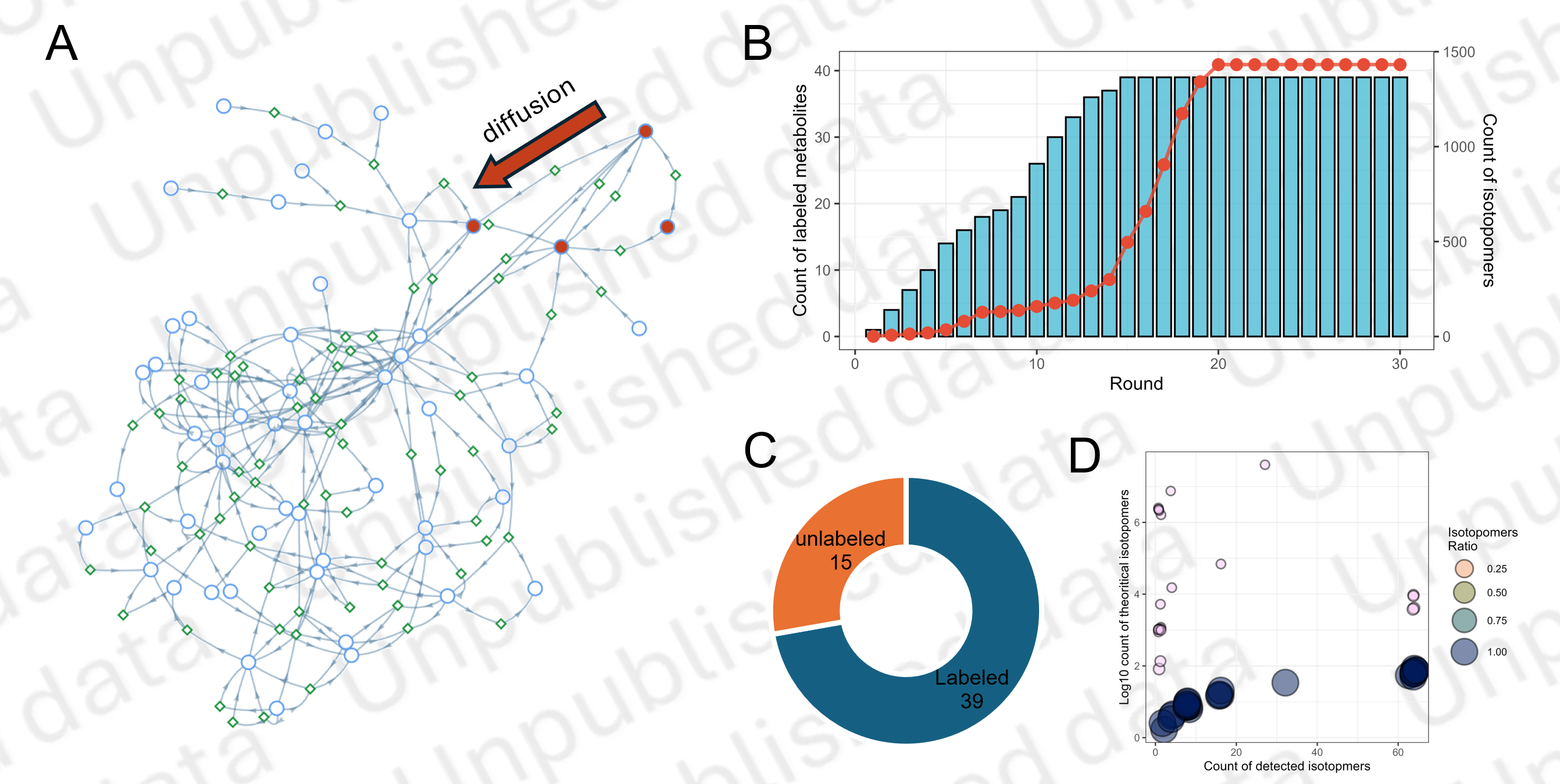
Network diffusion
Therefore we could simulate all possible isotopomers and elaborate how they are generated from the tracer.
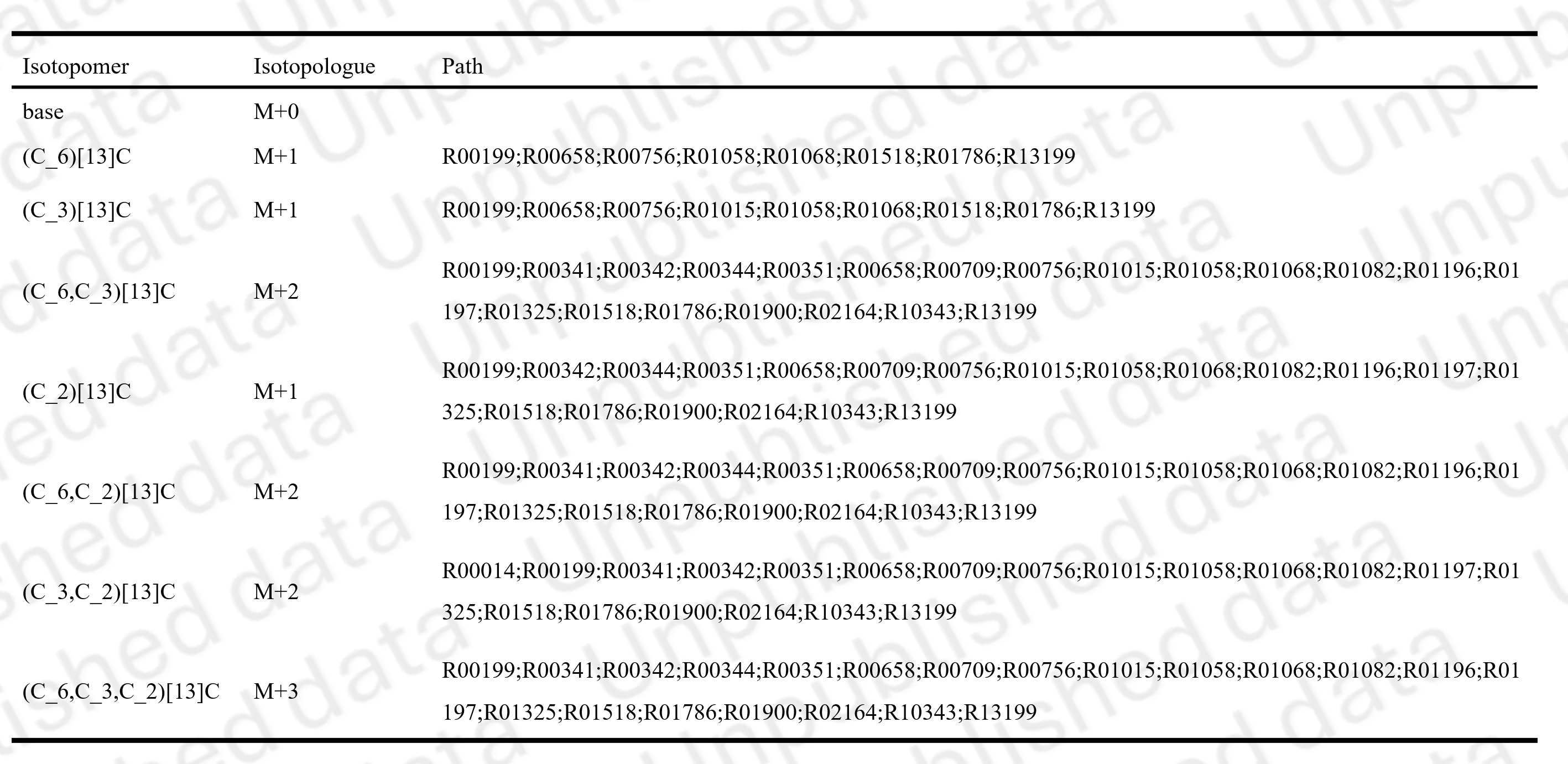
Reaction path of pyruvate isotopomers
Shiny GUI
To clearly comprehensively understanding the metabolic network and reaction path, we design a ShinyAPP to present: Metabolic Flux Network from glucose to GSH
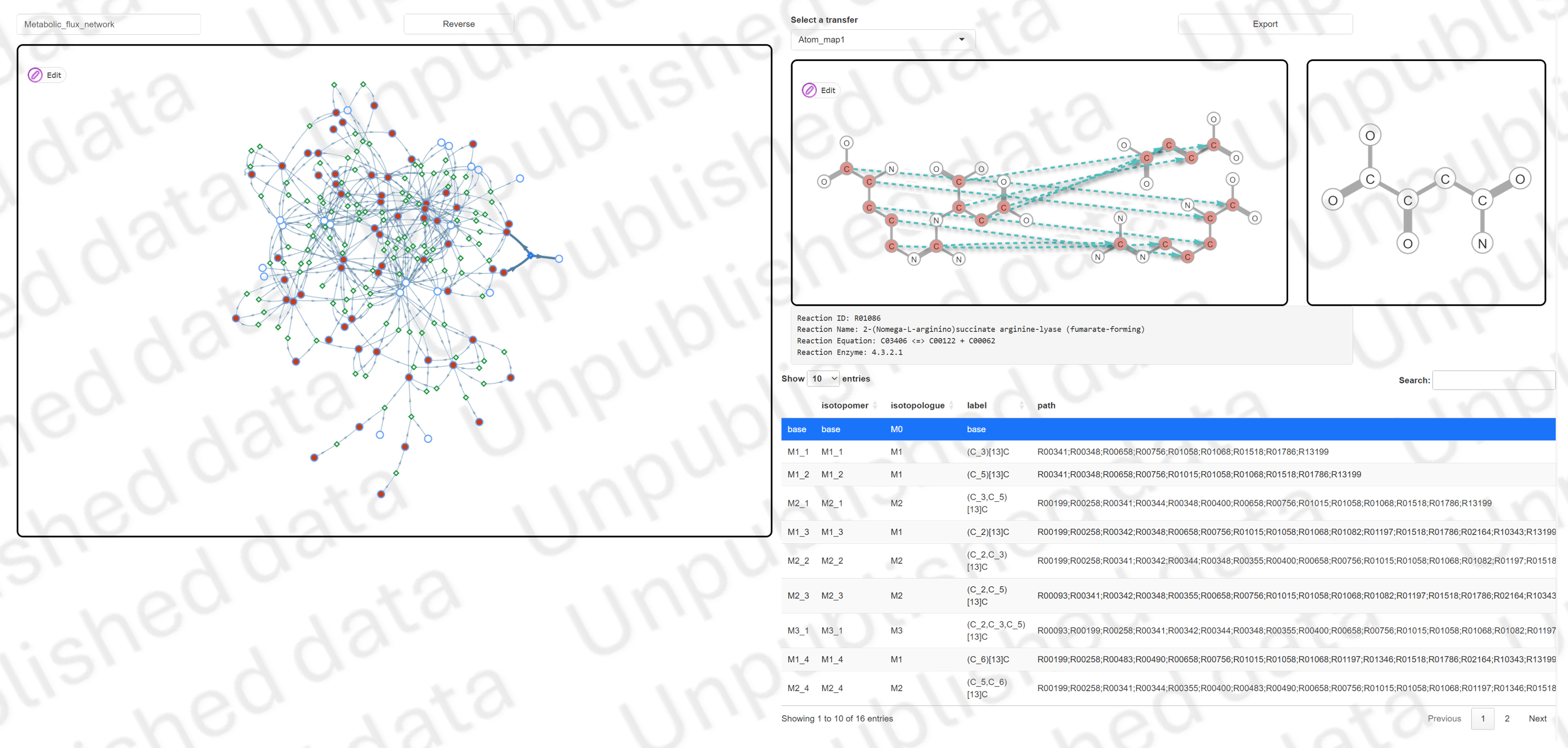
MFNA Shiny GUI
The left panel show the metabolic flux network. The right-top panel show atom transfer and isotopomer structure. The right-bottom table show all possible isotopomers and its generation path.
Click reaction node to view atom transfer, click a metabolite node to view its possible isotopomers, click a isotopomer to view its structure.